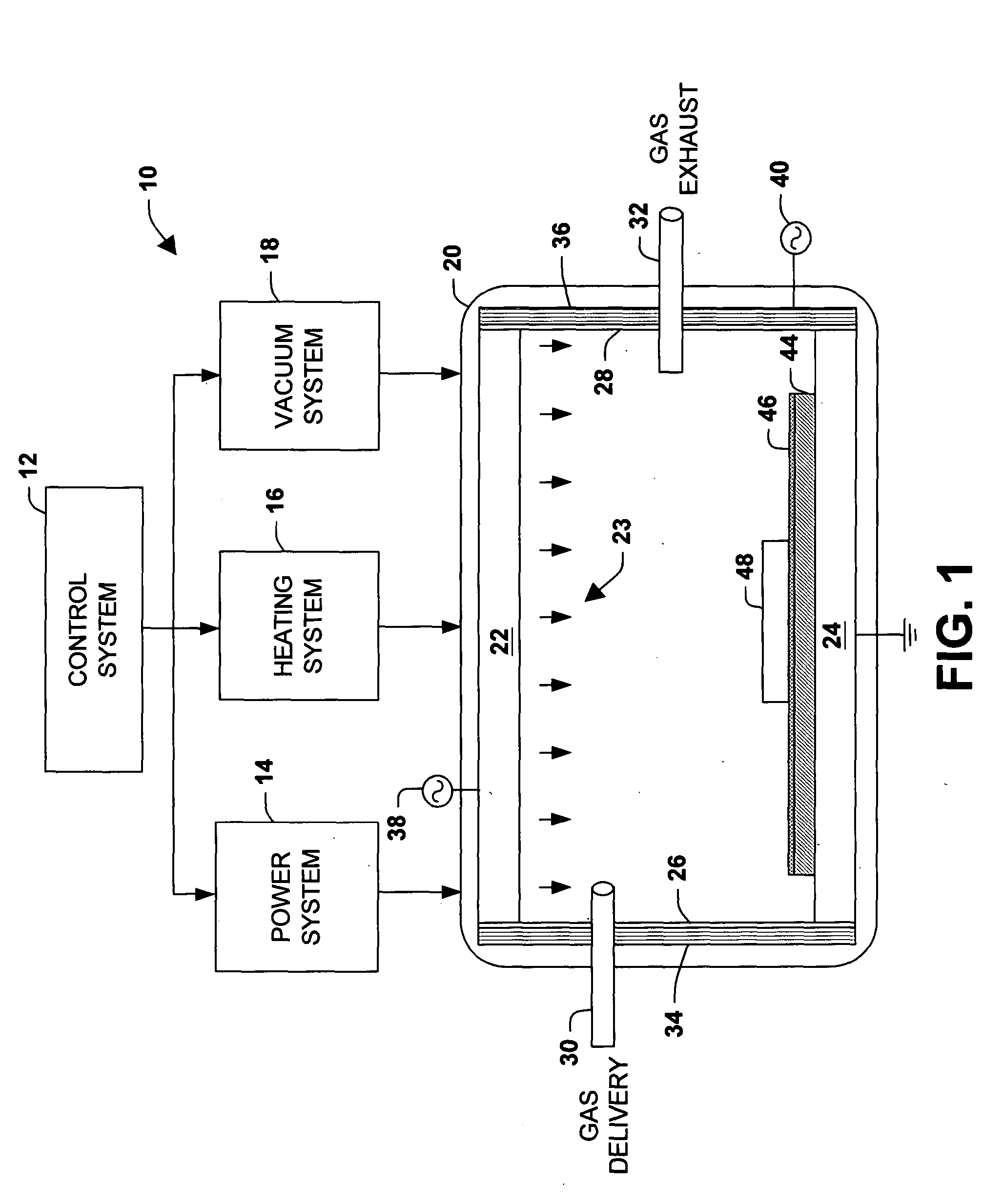Thin film resistor etch
a resistor etching and thin film technology, applied in the field of thin film resistor etching, can solve the problems that analog precision and mixed signal devices have not been fabricated using these submicron densities, and achieve the effect of enhancing the low pressure environment and reducing the damage associated
- Summary
- Abstract
- Description
- Claims
- Application Information
AI Technical Summary
Problems solved by technology
Method used
Image
Examples
Embodiment Construction
[0024] The present invention relates to the formation of a TFR by employing a plasma etch on a resistor material layer formed of a nickel chromium (NiCr) alloy, or nickel chromium aluminum (NiCrAl) alloy. The plasma etch can be performed in a magnetically enhanced (e.g., in a magnetic field) low pressure (e.g., at or below 30 mTorr) environment with a chlorine and boron tri-chloride plasma chemistry mixture. The plasma etch mitigates resist adhesion issues associated with wet etch processes. The plasma etch also mitigates resistor width issues associated with resistor designs in addition to reducing the costs associated with employing wet etch chemistries versus plasma process gases.
[0025] Conventionally, a NiCr or NiCrAl resistor is formed by etching a NiCr or NiCrAl resistor material layer over a dielectric layer. A patterned photoresist layer is then provided over the resistor material layer to form the pattern for the thin film resistor. A wet etch having a nickel soluble compo...
PUM
| Property | Measurement | Unit |
|---|---|---|
| pressure | aaaaa | aaaaa |
| power | aaaaa | aaaaa |
| temperature | aaaaa | aaaaa |
Abstract
Description
Claims
Application Information
 Login to View More
Login to View More - R&D
- Intellectual Property
- Life Sciences
- Materials
- Tech Scout
- Unparalleled Data Quality
- Higher Quality Content
- 60% Fewer Hallucinations
Browse by: Latest US Patents, China's latest patents, Technical Efficacy Thesaurus, Application Domain, Technology Topic, Popular Technical Reports.
© 2025 PatSnap. All rights reserved.Legal|Privacy policy|Modern Slavery Act Transparency Statement|Sitemap|About US| Contact US: help@patsnap.com



